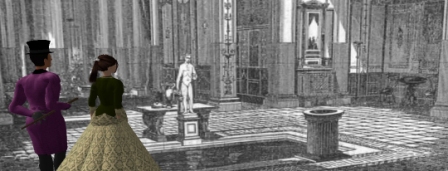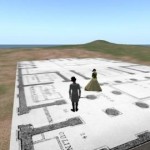There was an interesting article on the BBC recently that looked at how new technologies (specifically immersive environments using avatars, such as Second Life), are changing the way we interact with cultural artifacts (such as art and music).
Furthermore, Bill Thompson, the articles author, points out that these environments are changing the very way such artifacts are created, and if institutions do not adapt and adopt, they risk becoming obsolete. This ‘creative destruction’ has seen Google eliminate all competition, and Microsoft flourish in spite of IBM.
What is even more interesting, and is something that is being explored by the Resurrecting the Past – Virtual Antiquities in the 19th Century, is the space that exists between us and the relics of the past.

In creating a virtual museum environment within Second Life, and exploring innovative ways to allow us to interact with a reconstruction of the Pompeii Court from the Crystal Palace, the project is creating a new space between the present and the past
The use of technology will not simply allow cultural institutions the chance to survive and adapt to technological changes. It also gives these institutions a chance to develop a space that allows all of us an opportunity to interact with the past in a completely new way.
In creating this space inbetween there is the opportunity not only to interact with the past, but also to interrogate the present. It allows us all to ask questions of those cultural institutions that currently negotiate between us and our cultural artifacts, and to question whether what they are doing is relevant to where we are today.
By funding such innovative projects, by allowing this space, academic and cultural institutions are able to respond to the ways technology changes the demands of users, and what their role is within this relationship.
Rather than ‘creative destruction’ such projects can help foster a sense of ‘creative engagement’, not just with technology, but with how all of us interact with our own cultural heritage.
 More information on the Resurrecting the Past project is available on their Blog.
More information on the Resurrecting the Past project is available on their Blog.
